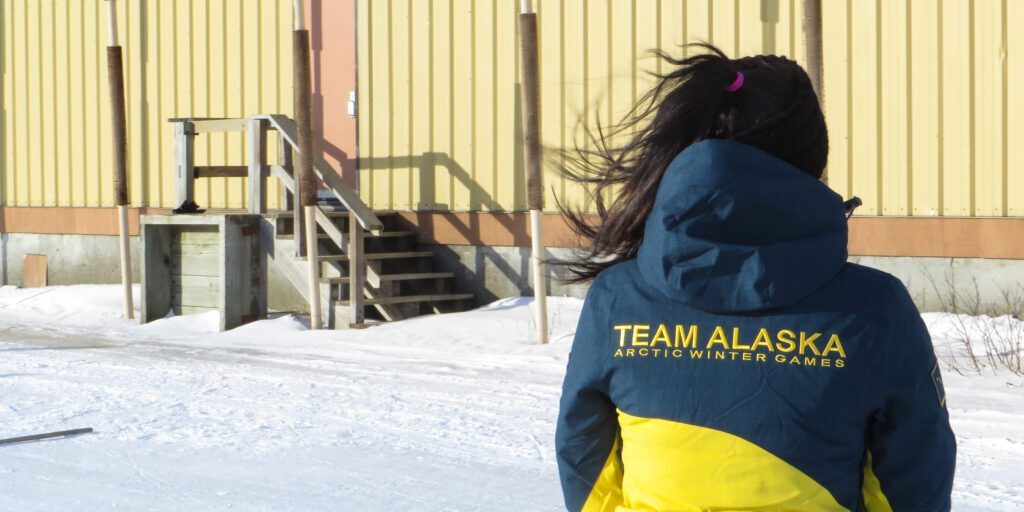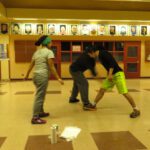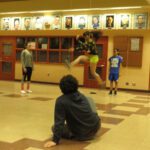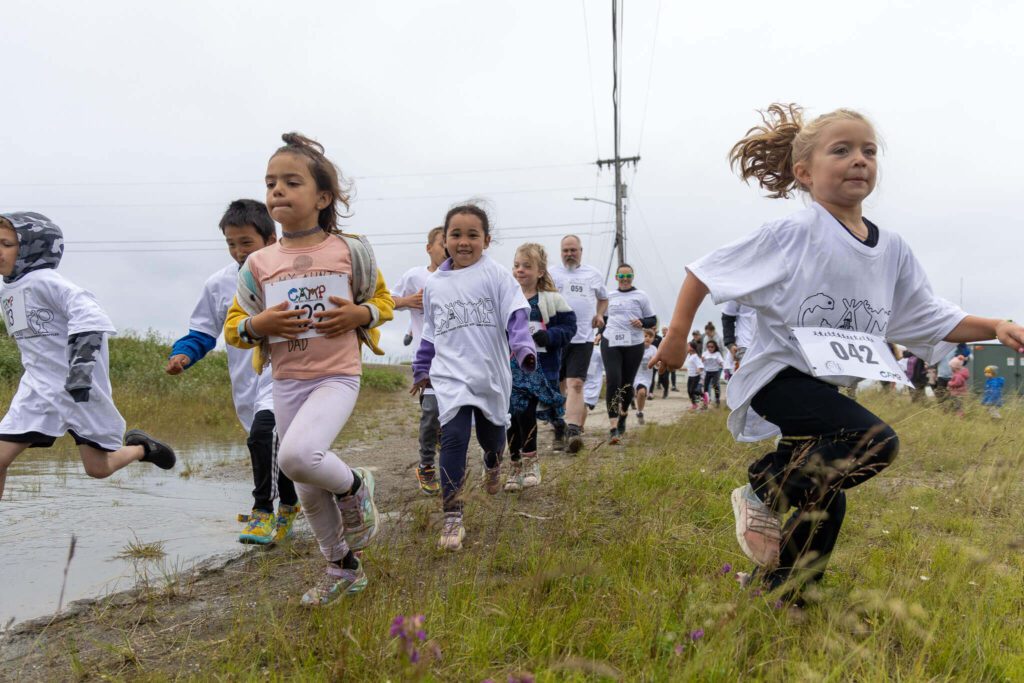NOME, ALASKA — The Arctic Winter Games start Sunday in Greenland. Nine athletes from Nome are representing Team Alaska at the international tournament. They’ll compete in four events: Dene Games, Arctic Sports, Biathlon Ski, and Alpine Skiing.
Most of Nome’s athletes have competed in indigenous games since they were little kids. But at today’s practice, Coach Marjorie Tahbone has them trying something new.
“Snow Snake is a traditional Athabascan game,” she said.
Because it’s Athabascan, it’s new to the Nome competitors, who are used to playing Inuit games. This is their first time practicing the outdoor event. In the parking lot outside the Nome Recreation Center, they take turns throwing a 5-foot-long spear along on the ice-packed asphalt. They throw it underhanded, and it glides across the snow like a snake.
“They used to use that as a way to hunt and stun animals on the ice,” said Tahbone. “Birds, for example. Ptarmigan. They would throw the spear from far away and hit and stun the bird. They would run up and wring its neck and get game that way.”
At the Arctic Winter Games, the furthest distance in three tries wins. Tahbone said the best athletes can propel the spear as far as 500 feet. Nome‘s competitors may not reach that level yet, since they’re new to Snow Snake, but Tahbone said Team Alaska will be a strong contender in most events.
Zach Tozier is on the team. He’s a junior at Nome-Beltz Junior and Senior High School, and he’s competed in Native games for six years. This will be his first Arctic Winter Games, and he said he’s excited for one event in particular: “Probably the Indian Stick Pull.”
Stick Pull has two competitors stand side-by-side with their opposite feet braced against one another. Between them, they each grasp one end of a tapered stick that’s been greased. At the signal, they pull. Whoever wrenches the stick free from their opponent’s hand wins the round.
Like Snow Snake, Stick Pull is a best-of-three event. Tozier said he likes the skill because it’s not just about brute strength. He said it also tests finesse, patience, and strategy in how you grip the stick, when you twist it, and when you just hold on.
“Most of the games are strength-based, so it’s different when you’re just trying to hang on to a slimy stick,” he said.
Stick Pull has its origins in Arctic peoples’ needing to grab and hold slippery fish. So while Tozier aims to medal in the event, he said competing is really about connecting with his family’s past and participating in tradition. He said it means lot to him, especially since many Native games were banned during periods of colonization and cultural assimilation.
“It’s bringing back my culture, as it was pretty much decimated when Alaska was taken over,” he said. “So it’s just a nice way to immerse yourself into it.”
Coach Tahbone’s team is training for the Native events, but that’s only one part of the Arctic Winter Games.
“There’s skiing. There’s basketball. There’s wrestling, figure skating, hockey … And then there’s us: Arctic Sports and Dene Games,” she said. “We really bring the culture to the games, I think.”
Tahbone competed in three Arctic Winter Games before turning coach. She said one of her favorite parts is meeting other indigenous athletes. There are potlucks where Alaskans can socialize with competitors from Canada, Greenland, and other Arctic nations. She says teams exchange their national pins and sometimes hold a blanket toss for fun.
“It’s not about winning,” she said. “It’s not about winning at all over there. I mean, we’d really like it if we left with some medals. But really, I just want them to have fun and enjoy themselves — socialize and meet people and experience other things. Just have a good adventure over there in Greenland.”
The Nome athletes for Team Alaska leave Friday for Nuuk, Greenland. The Arctic Winter Games start Sunday and continue through Friday of next week.











